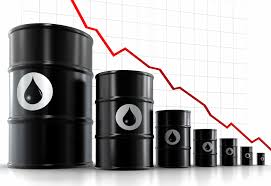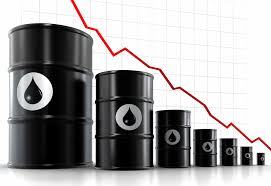
The ongoing OPEC-led output cuts and the prevailing tensions in the key producer country Iran has driven the price of global crude prices to an all time high since the setting of the slump in commodity prices in the global markets in 2014/15 and the prices that were touched on Thi=ursday were the highest in more than two and a half years.
And strong economic data from some of the leading global economies that included the United States, Japan and Germany drove the Asian stock market to heights that were among the highest in the last ten years on Thursday and which was also a reason for the rise in the global oil prices.
There was a rise of 0.9 percent or 53 cents in the price of U.S. West Texas Intermediate (WTI) crude futures CLc1 and clocked at $62.16 a barrel at 0752 GMT. And their highest levels since May 2015 was noted during the trading day when they touched $62.21 for brent crude futures LCOc1 - the international benchmark for oil prices, at $68.23 a barrel. This was a rise of 0.9 per cent or 39 cents.
And since the downward slant in oil prices in December 2014, this was the highest crude price levels apart from a brief period of intraday high in May 2015.
And short-term demand in heating oil in the United States has bene generated due to unusually freezing weather there.
“The market is clearly getting more bullish on oil as inventory levels get closer to the five-year average. Geopolitical uncertainty in Iran, OPEC’s third largest producer, is also helping to support the price as citizens are again protesting the government,” said by William O‘Loughlin, investment analyst at Australia’ Rivkin Securities.
It has been around there weeks that there has been unrest in Iran by anti-government protesters all over the country and on Wednesday, the government was forced to deploy the elite Revolutionary Guards in three provinces to limit such protests, said the commander of the force to the media.
However there has been no impact on the country’s oil production due to the unrest.
“The continued Iranian protests have triggered off a ‘what if’ reaction in an already extremely skittish oil market,” said Sukrit Vijayakar, director at energy consultancy Trifecta.
Because of the fact that “Iran’s oil resources are not near any of the major population centres or sites where the protests are playing out”, therefore there is very little chance of supply disruptions in oil production in Iran except for any form of potential strikes by oil workers of the industry, he added.
Industry group the American Petroleum Institute said on Wednesday that there has been a fall in the inventories of crude oil in the United States by a figure of 5 million barrels during the week ending Dec. 29 and touched 427.8 million barrels.
(Source:www.reuetrs.com)
And strong economic data from some of the leading global economies that included the United States, Japan and Germany drove the Asian stock market to heights that were among the highest in the last ten years on Thursday and which was also a reason for the rise in the global oil prices.
There was a rise of 0.9 percent or 53 cents in the price of U.S. West Texas Intermediate (WTI) crude futures CLc1 and clocked at $62.16 a barrel at 0752 GMT. And their highest levels since May 2015 was noted during the trading day when they touched $62.21 for brent crude futures LCOc1 - the international benchmark for oil prices, at $68.23 a barrel. This was a rise of 0.9 per cent or 39 cents.
And since the downward slant in oil prices in December 2014, this was the highest crude price levels apart from a brief period of intraday high in May 2015.
And short-term demand in heating oil in the United States has bene generated due to unusually freezing weather there.
“The market is clearly getting more bullish on oil as inventory levels get closer to the five-year average. Geopolitical uncertainty in Iran, OPEC’s third largest producer, is also helping to support the price as citizens are again protesting the government,” said by William O‘Loughlin, investment analyst at Australia’ Rivkin Securities.
It has been around there weeks that there has been unrest in Iran by anti-government protesters all over the country and on Wednesday, the government was forced to deploy the elite Revolutionary Guards in three provinces to limit such protests, said the commander of the force to the media.
However there has been no impact on the country’s oil production due to the unrest.
“The continued Iranian protests have triggered off a ‘what if’ reaction in an already extremely skittish oil market,” said Sukrit Vijayakar, director at energy consultancy Trifecta.
Because of the fact that “Iran’s oil resources are not near any of the major population centres or sites where the protests are playing out”, therefore there is very little chance of supply disruptions in oil production in Iran except for any form of potential strikes by oil workers of the industry, he added.
Industry group the American Petroleum Institute said on Wednesday that there has been a fall in the inventories of crude oil in the United States by a figure of 5 million barrels during the week ending Dec. 29 and touched 427.8 million barrels.
(Source:www.reuetrs.com)














